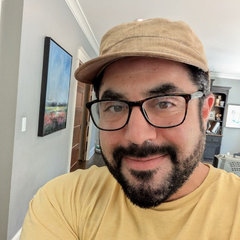"Non-dual" misnomer
In another thread, @Apech wrote regarding the two truth's doctrine:
Why again is this considered "non-dual"? Does the term "non-dual" make any sense at all in this context? It's two-truths? That's dual. The cup is simultaneously real and not-real. That's dual.
That's very interesting, to me. When you say, "different to Gautama's conclusion", I wonder if you are referring to his conclusions about suffering?
For me, when I sit there's effort involved, to realize "the degree of “self-surrender” required to allow necessity to place attention, and the presence of mind required to “lay hold” as the placement of attention shifts". The ability to realize "one-pointedness" doesn't preclude the experience of the kinesthesiology around support for the structure of the spine--more like it begins meaningful experience of the kinesthesiology.
The fourth concentration, in which "purity of mind" suffuses the body (translation: necessity can place one-pointed attention freely, anywhere in the body), Gautama said was marked by a feeling like a cloth that wraps the entire head, and even the entire body. I believe that's an evenness of sensation in the dermatomes, as a result of an openness in the nerve exits between vertebrae along the spine and along the sacrum. The openness follows the engagement of a particular mechanism of support for the spine, and the four initial "trances" are stages in the coordination of the muscles and ligaments that lead to that support.
I sit with a rhythm in the relaxation of agonist/antagonist muscle groups, with a rhythm in the calm extended to the stretch of ligaments (ligaments that control the reciprocal innervation of paired muscle groups), with a rhythm in detachment with regard to thought, and with a rhythm in the cessation of activity in inhalation and exhalation through the experience of activity out of the placement of attention.

